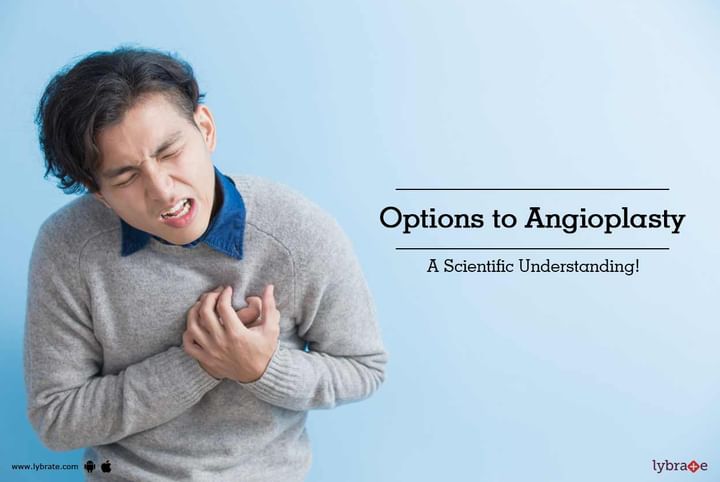Options to Angioplasty - A Scientific Understanding!
When a person suffers from the typical symptoms of heart weakness that includes breathlessness, weakness, sudden sweating, discomfort while doing minor exertions, chest pain, pain radiating along the arms, back, neck and shoulders and other symptoms, the Doctor will ask for investigations to study the heart.
The Heart is a muscular organ in the chest and like any other muscle in the body, it has its own unique blood vessel network that does the function of supplying nutrition to the heart muscles. Like any network, the Cardiac blood supply also begins with major vessels that branch off into minor and then very small blood vessels. It is these very small blood vessels that actually reach the muscle fiber to give nutrition.
When this is a problem with the free flowing blood to reach the muscle cells, the strength of the heart muscles reduces and the overall heart functioning is in trouble. Until now, it was commonly believed that cholesterol deposits make blockages in the blood vessels that cut off nutrition supply causing the heart to go into disease stage. Today, extensive research has proved that there are many reasons for hampered blood supply to heart muscles, and plaque formation (blockages caused by cholesterol deposits) need not be the reason for heart attacks entirely. Blood vessel disease called Atherosclerosis is the root cause.
In modern times, if the patient consults a cardiologist, the first line of investigation prescribed is the Angiography. This procedure requires the patient to be admitted to the hospital. Under anesthesia, the Doctor will make a cut/incision in a major blood vessel of the thigh joint or the arm. He will then insert a tube called catheter into the blood vessel and guide it through the major arteries till it reaches the important position from where the blood vessels that supply nutritious blood to the heart muscles is reached. At this position, a dye is pushed into the blood flow and a series of specialized X-rays are taken that will show the blood vessels.
In these images, it is the Doctor’s expertise that will identify positions where the blood flow is reduced, or disturbed. The dye has a short life span and is able to show flow dynamics only up to the secondary blood vessel network. The Doctor will determine which part of the heart blood vessels are affected based on these images, the length of the plaque, position and kind of blockage and derive the damage to heart, based on these anatomical visuals. The catheter is then removed; the blood vessel opening stemmed and the patient has to remain immobile in the hospital till the blood vessel improves. The Doctor will prescribe a list of medication that includes beta blockers, aspirins, statin and antibiotics.
Very often, if the Doctor decides, he will suggest the next procedure of Angioplasty immediately. This procedure involves pushing a mini wireframe tube called ‘stent’ or an inflatable balloon through the same catheter to the area of blockage. This balloon or stent is guided to the area of the blockage and mechanically expanded to push aside the plaque to help the blood flow resume. There are different kinds of balloon and stent procedures.
None of these procedures “removes” the blockage plaque. The procedure helps to resume blood flow in the major arteries only.
No invasive therapy is safe and there is a lot of reports backed by Research Data from very reputed global authoritative organizations that highlight the unnecessary number of angio procedures being done as well as the side effects of these procedures within few months. (Many Stent Procedures Unnecessary” Heart Drugs Just as Good at Preventing Heart Attacks, Death in Some People, Study Shows By Charlene Laino: March 26, 2007 (New Orleans).
Can blockage affect a person after having angiography?
It is important for the patient and patient’s family to understand that the blockage formation process in the body does not reverse with an angioplasty or even a Bypass procedure. The patient suffers from the same kind of symptoms as earlier when new blockages form in different sections of the coronary network or very often, when a deposit / scar forms within the stent itself leading to hampered blood flow. This ‘reformation of blockages’ is referred to as restenosis. This is the greatest problem registered in current studies of patients after angio and bypass and this is seen within few weeks to after 10 to 14 months of the procedure.
The reformation of blockages or further formation of new sites with blockages depends on the individual patients health condition. Patients who are Diabetic, High BP, on certain kind of long term medication, obese, with bad lifestyle; all have the additional threat of secondary attacks.
Restenosis cannot be prevented with another stent or bypass procedure. The procedure only once again’ mechanically opens the blockage or in CABG, creates a bypass around the blocked blood vessel.
How can restenosis be prevented?
The only and best way to avoid restenosis is to make major changes in diet, exercise, weight management, stress management. It is also very important to be under the right kind of medication that will support the natural process done by the Liver and blood to reduce and wash out inflammation (that causes maximum problems in natural blood flow), repair blood vessels, reduce and remove existing blockages and scar tissue within blood vessels, add strength to the heart muscles.
Ayurveda has many proved medication combinations that include Arjuna (improves Heart muscle condition) Draksha (powerful anti-oxidant and liver repair) Dadimba (Pomegranate is known to participate in repair of blood vessels and rebuild damaged vessels called Angiogenesis), Ashwagandha (Cardio-protective) and Colostrum (powerful immunity modulator, participate in muscular and nerve repair, Angiogenesis Growth Factor, Endothelial growth Factor, Nerve growth factor, PDGF, natural Vitamins and Minerals).
These treatments are now available in select Ayurvedic treatment centres and are also being proved with clinical pre and post investigations to support their success.
These new studies and treatments options should be searched out by the patient and his/her family to understand the reason of blockages, the possible need and safety of invasive procedures, the option to medicine based treatments before undertaking any invasive procedure. Remember, it is scientific research that has clearly proclaimed that less than 30 -20% of all the angio’s performed are necessary or have lasting effect on their own.



+1.svg)
